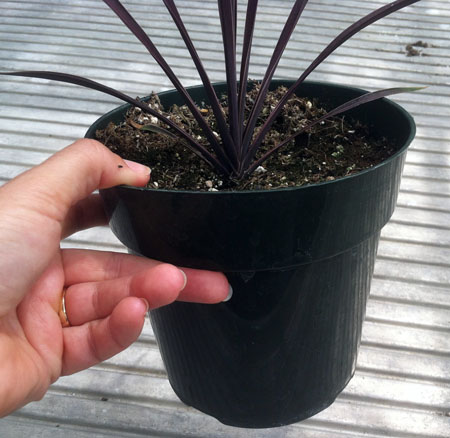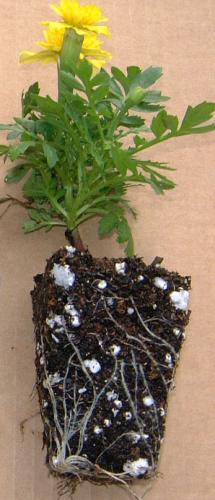Have you thought about your greenhouse watering strategy lately?
Watering is such a basic task for greenhouse growers that the mode of operation may be “This is how we’ve always done it.” Consider thinking about that strategy to improve production quality and save money.

Lately, especially in smaller, less-automated greenhouses, I’ve seen a lot of overwatered crops. It seems that many commercial greenhouses use a water management approach of “When in doubt, water!”
Excessively saturated media may lead to development of root rot pathogens like Pythium species (i.e., potential crop loss), use unnecessary amounts of water (is that your money running down the drain?), and can lead to off-site nutrient runoff (environmental concerns?). According to Michigan State University Extension, watering only when needed has the potential to save labor costs and time, reduce crop loss due to root rot pathogens, improve the post-production survival or quality of many floriculture crops, and reduce water use and potential off-site nutrient runoff.
The optimum time between irrigation events can vary from grower to grower, depending on a variety of variables. These include the growing environment such as light levels (sunny or cloudy) and air temperature; properties of the media, like if it is well drained or not; and the species grown, for example some can tolerate very dry conditions, while others may not. There are four main methods of determining when to water greenhouse crops: evaluation of plant appearance, weight or gravimetric determinations, timed application, and other instrumentations.
One method of timing an irrigation event is to apply the water just before the earliest symptoms of water stress occur in a particular crop. Depending on the uniformity of drying of plants on the bench, it is possible that allowing a few, say 5 percent, of the plants that dry the fastest to wilt resulting in an acceptable indicator of when to irrigate the majority of the crop (Photo 1).In addition, some plant leaves appear to change color just slightly upon first moisture stress. This is a result of the decreasing volume of water in the leaf cells whereby the cells are slightly shrinking, which impacts how light is reflected on the leaf.
Using weight or gravimetric methods is perhaps the most common method of determining the need for water. To do this, growers simply check the weight of individual plants or pots. This can be done informally by simply becoming familiar with what a wet and dry medium feels like; pick up the pot and get a ‘”feel’ for the weight (Photo 2). Or, more formally, by taking representative plants off the bench and putting them on a scale. A simple bathroom type scale works well. By checking the weight, a decision can be made to irrigate when a certain amount or percent of the available water is lost. Using a scale can help growers schedule irrigations more efficiently; especially new growers who are worried about letting plants get too dry.
Photo 2. A grower picking up a pot to get a sense of the weight of the pot. If the pot is heavy (wet) or dry (needs water) will determine whether to water this crop or not. Photo credit: Kristin Getter, MSU
Timed applications are another method of when to apply water. This is when either an automated system or a person hand-waters at preset intervals. It should only be used with grower supervision to prevent waste of water and fertilizer. In addition, irrigating at a preset time interval often does not account for changes in plant development and environmental conditions. Therefore, the intervals may need to be adjusted based on these factors – to either prevent overwatering and the propensity for root rot diseases, or underwatering and stunting growth.
There is a trend towards using automated irrigation systems due to the increased use of environmental control computers, the high cost of labor, the increasing variety of reliable irrigation systems and the need to minimize water use and fertilizer runoff. These automated systems may use a variety of technologies to determine when to water. In addition to just a straight timer, these systems may also contain tensiometers to estimate how available the water in the medium is to plant roots, light sensors to measure light intensity, and thermocouples to measure air temperatures to estimate water needs. Either way, these instrumentations can be attached to a computer which can then control irrigation timing.
Regardless of the watering timing method used, make it a habit to drop plants out of the pot to examine the root system (Photo 3).The roots of plants that have received water too frequently will be long and thin with few root hairs. Those that have not been watered frequently enough will have short, stubby roots and the root hairs may be curled or brown. Although the appearance of healthy roots varies from species to species, in general a healthy root system should have an abundance of straight, white roots with root hairs just behind the growing tips.In addition for overhead irrigation systems, roots that are only in the upper half of the pot may indicate not enough water is applied; in other words, water doesn’t get to bottom of pot.
Photo 3. Healthy roots on marigold. Photo credit: Erik Runkle, MSU



 Print
Print Email
Email




